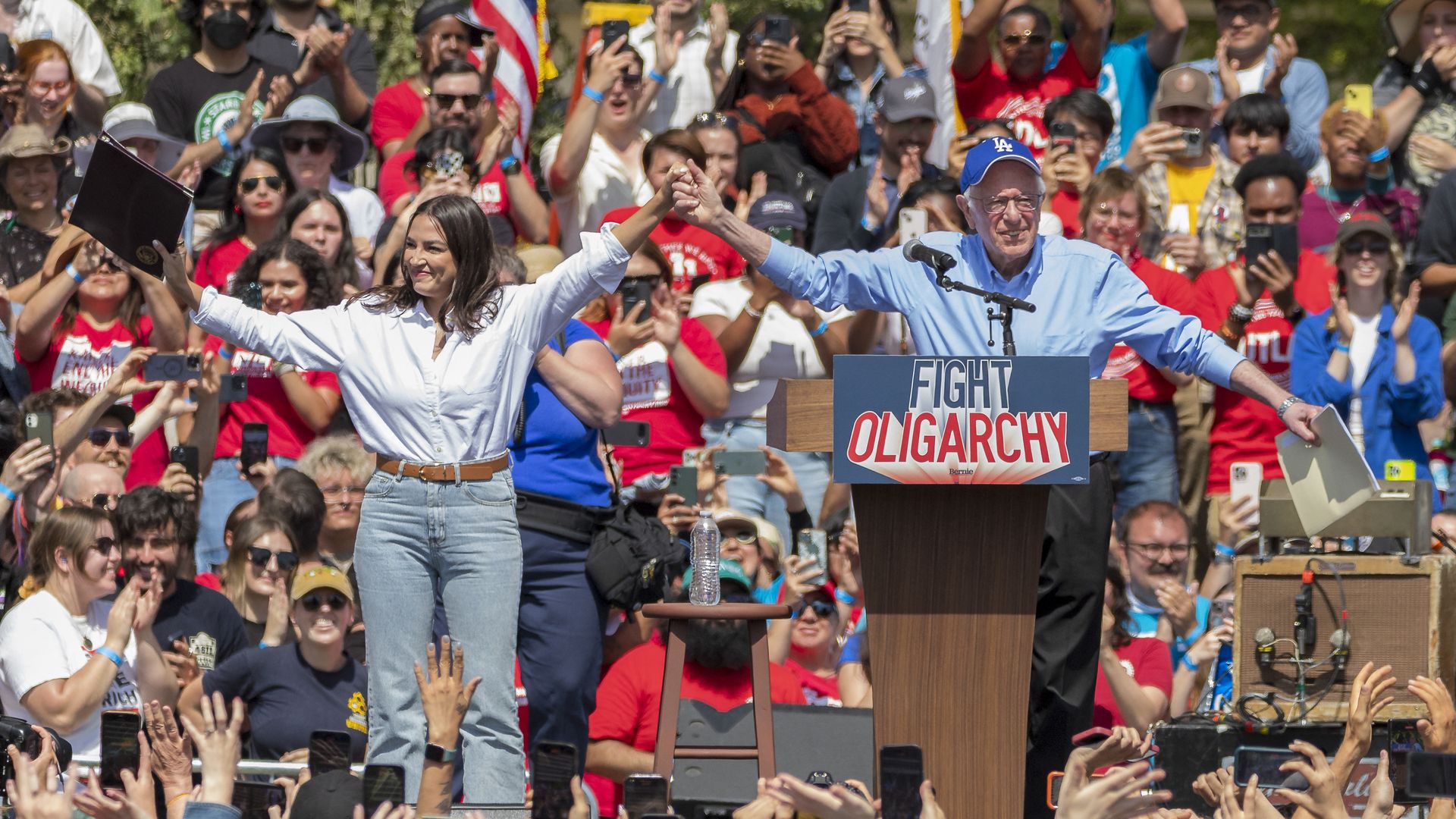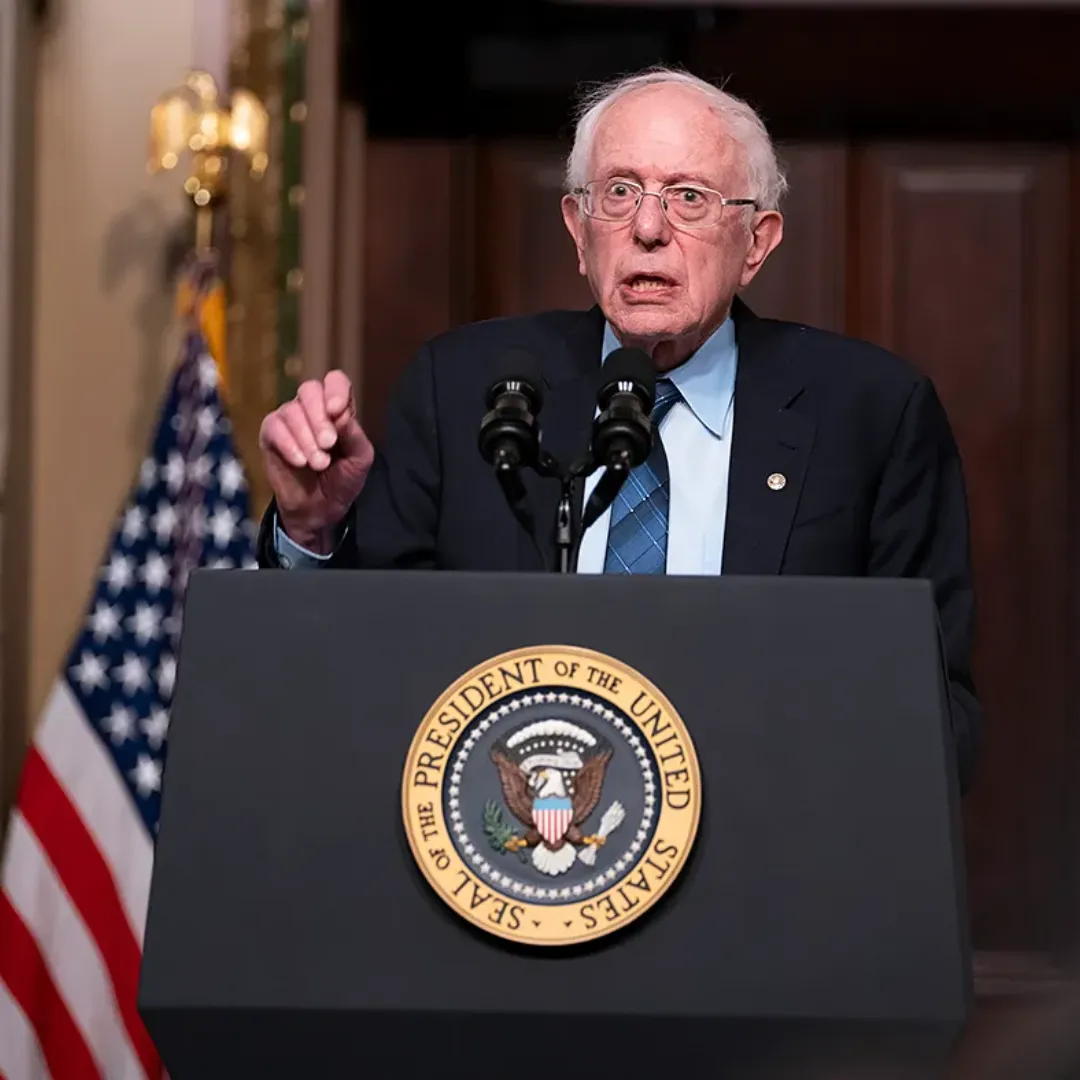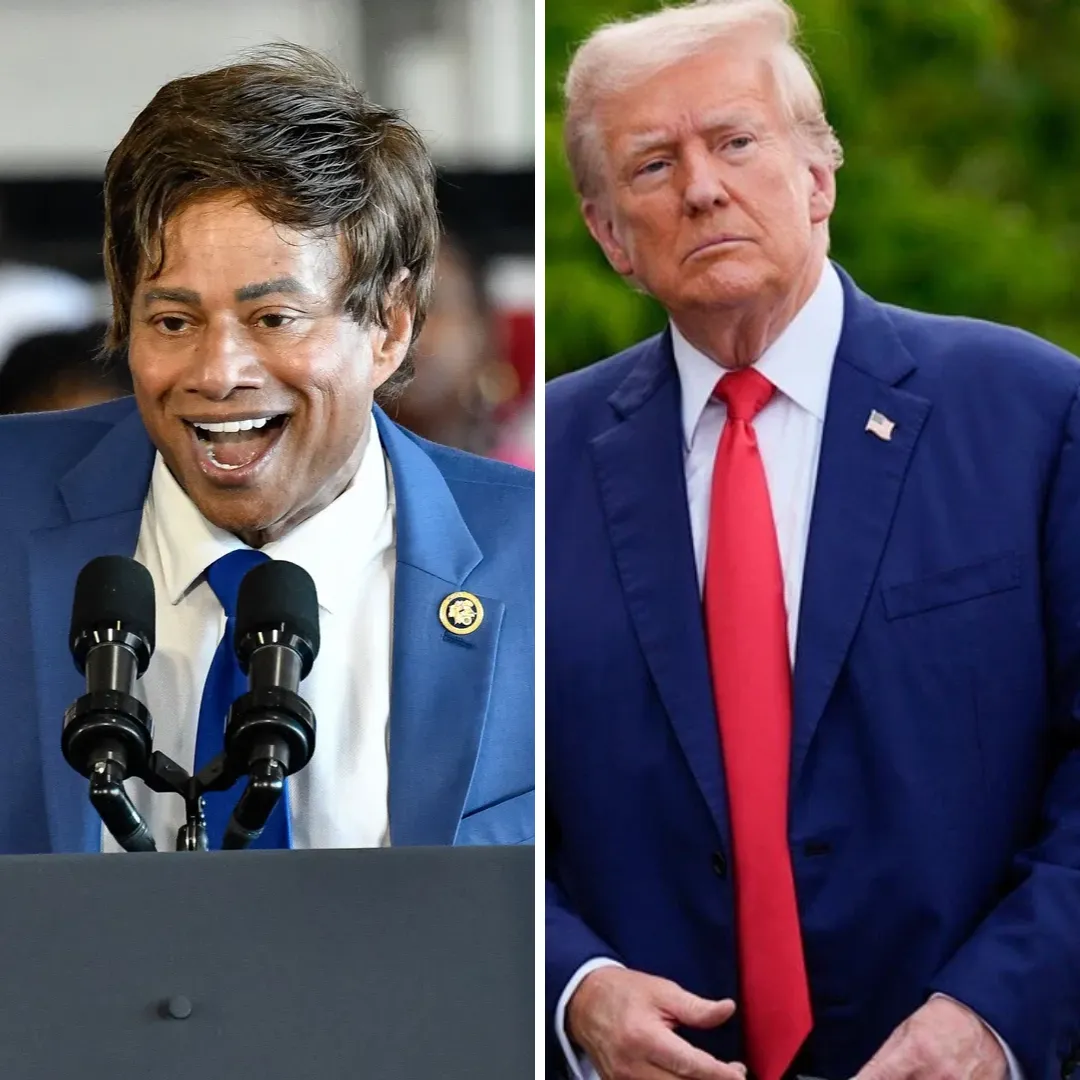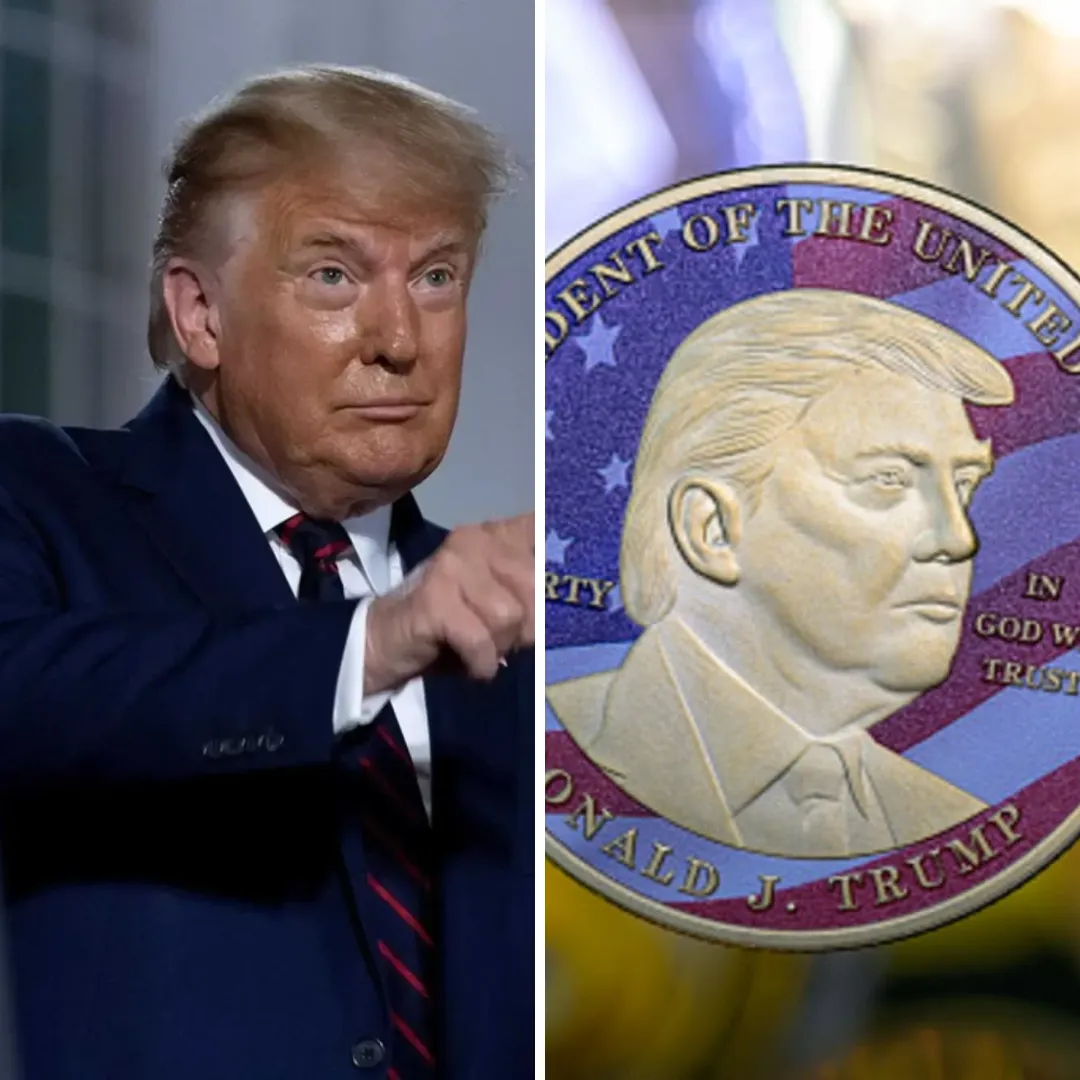
Senator Bernie Sanders took a public jab at President Donald Trump on Wednesday, mocking the turnout at the president’s rally in Michigan and contrasting it with the size of his own recent event in the same area.
The exchange added another layer of intensity to the ongoing political rivalry between progressive Democrats and the Trump administration during the president’s second term.
Sanders, who represents Vermont as an independent but caucuses with the Democrats, used social media to needle Trump about the audience numbers at his Tuesday rally in Warren, Michigan, a key suburb of Detroit located in Macomb County.
The event marked Trump's first major appearance outside of Washington, D.C., since returning to office in January.
“Congratulations to President Trump for drawing 4,000 people last night to a rally in Warren, MI. Keep it up,” Sanders wrote. “You brought out almost half as many people as we did in the same city last month!”
He followed the comment with a pointed message. “Americans are fighting back against authoritarianism and attacks on the working class.”
The crowd size comparison highlighted the growing influence of progressive Democrats in regions once considered solid ground for Trump’s populist message. In Michigan, a critical battleground state, both sides have been ramping up appearances in recent weeks.
Sanders and Representative Alexandria Ocasio-Cortez of New York have held a series of rallies targeting the administration’s policies on labor rights, healthcare, and climate, drawing sizable crowds in working-class communities.

Trump, during his Tuesday event, acknowledged the attention his opponents have been receiving. Early in his speech, he referenced both Sanders and Ocasio-Cortez by name, mocking their events while insisting that his own rally had a larger and more energized turnout.
That claim drew a quick response from Ocasio-Cortez, who joined Sanders in ribbing the president online. Responding to Trump’s assertion that his rally outperformed theirs, she posted a wry comment that read: “Tell me we’re in his head without telling me we’re in his head.”
The exchanges reflect not only the heightened partisan tension but also the increasingly personal nature of the conflict between Trump and his most vocal critics on the left.
While Sanders and Ocasio-Cortez have long challenged Trump’s policies on economic grounds, they are now directly confronting his public messaging and image—especially in regions like the Midwest, where political identity is in flux.
At his rally, Trump focused on familiar themes, celebrating his reelection victory while delivering criticisms aimed at former President Joe Biden, as well as members of the judiciary who have challenged some of his executive actions since returning to office.
“This is a new beginning,” Trump told the crowd, repeating his frequent refrain that the media undercounts his support and underestimates his agenda. “They say we don’t have the crowds. But look around you. They’re all here because they want America to win again.”
Trump's remarks continued for over an hour, punctuated by his criticisms of judges who have attempted to halt key parts of his agenda, including deportation policy and federal workforce reform.
He also took time to revisit claims about the 2020 election, despite ongoing legal and political scrutiny over his past statements and actions related to that period.

For Sanders, the Michigan rally and the subsequent social media jabs were part of a broader campaign to frame the new Trump administration as a threat to working-class Americans. He has frequently accused Trump of embracing corporate power, undermining labor rights, and advancing a top-down economic agenda despite populist campaign rhetoric.
“Authoritarianism doesn’t always start with a bang—it can creep in through cynicism, division, and fear,” Sanders said in a speech last week. “But when people organize and stand together, that kind of government doesn’t last long.”
Ocasio-Cortez, who has taken on an increasingly prominent national role in her second term in Congress, has echoed that message, describing the administration as both out of touch and reliant on grievance politics.
Her recent appearances in the Midwest have drawn national attention, as she seeks to expand her influence beyond her home district in New York and connect with voters in swing states.
Together, Sanders and Ocasio-Cortez represent a bloc within the Democratic movement that is betting heavily on grassroots engagement and public pressure campaigns as a counterbalance to Trump’s top-down political machine.
Their campaign events feature union leaders, climate activists, healthcare workers, and others who argue that the administration is betraying its promises to ordinary Americans.
Trump, meanwhile, has leaned into a narrative that paints progressive leaders as elitists disconnected from everyday concerns. At Tuesday’s event, he accused Democrats of focusing on cultural issues and “phony scandals” rather than solving real problems. He also repeated claims that media coverage of left-wing rallies is overblown and coordinated.
“They love the socialists because they say what the media wants to hear,” Trump said. “But we know the truth, and we’re going to keep fighting for it.”

While the debate over crowd sizes may seem symbolic, political strategists say these public displays of support serve as a proxy for broader electoral momentum.
With the 2026 midterms already on the horizon, both parties are eager to demonstrate energy and engagement in key swing areas like Michigan. Macomb County, in particular, has played a decisive role in past elections, swinging between Democratic and Republican candidates in recent cycles.
Sanders and Ocasio-Cortez have suggested they plan to return to the region for more events in the coming months. Their message has been particularly focused on wage inequality, the cost of healthcare, and opposition to Trump’s proposals to restructure Medicare and Medicaid.
Trump has pushed back on these claims, saying his administration will protect entitlements while reducing waste and fraud in the system.
As the rivalry escalates, the interaction between Trump and progressive leaders is expected to intensify, both on the campaign trail and through digital platforms.
The president remains a frequent user of social media to respond to criticism, while Ocasio-Cortez and Sanders have built strong online followings that amplify their messaging and drive engagement among younger voters.
Whether the crowd-size debate proves to be a defining moment or just another flashpoint in a noisy political season, it underscores the deep divides shaping American politics. One side is focused on reclaiming power through traditional populism and institutional restructuring.
The other seeks transformation through protest, community organizing, and direct challenge to the very structures Trump commands.
Either way, the city of Warren—like much of America—finds itself once again at the crossroads of political identity, caught between past promises and future visions, between returning leaders and emerging voices, all vying for the support of an increasingly restless electorate.




